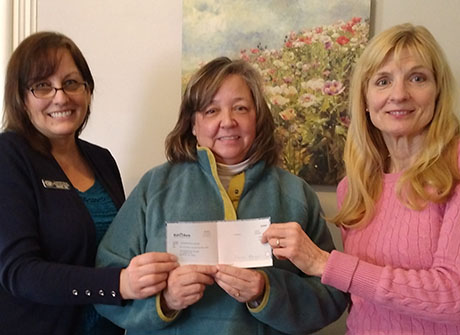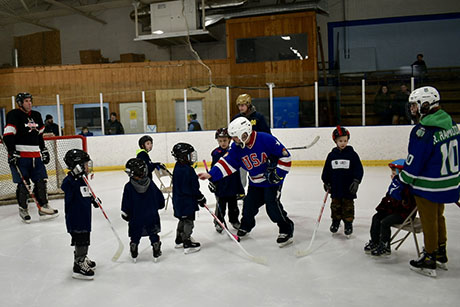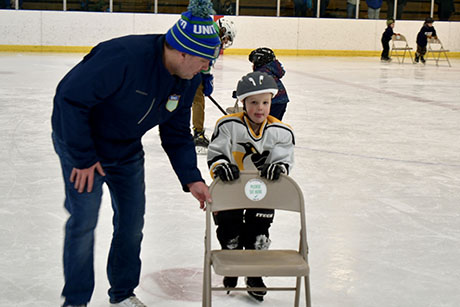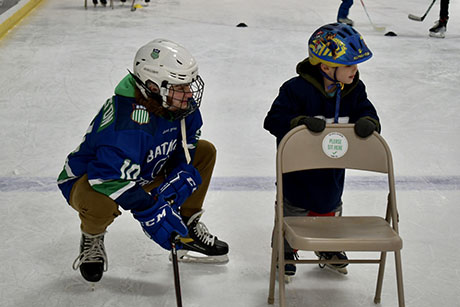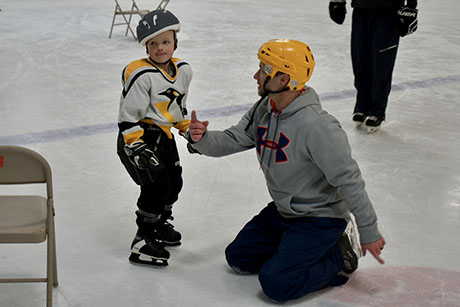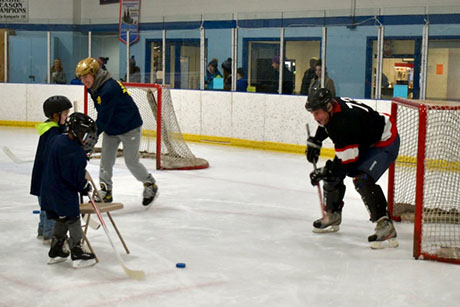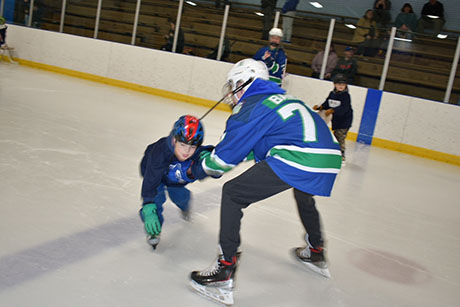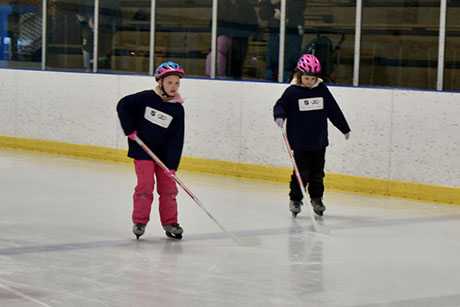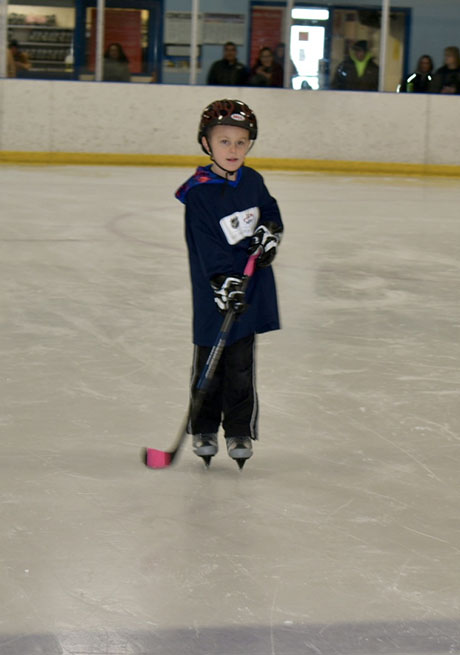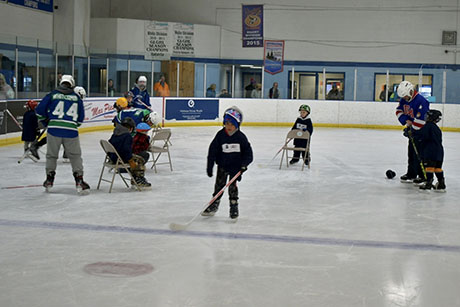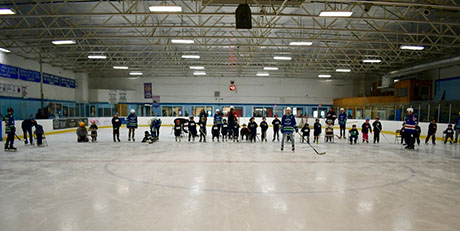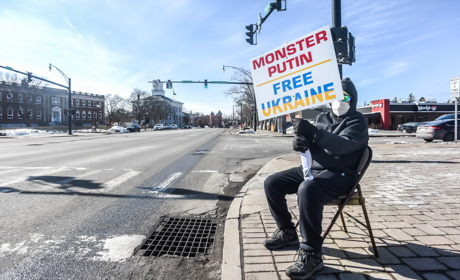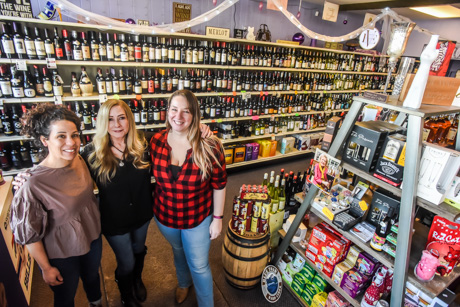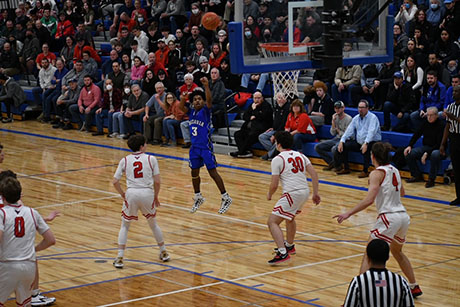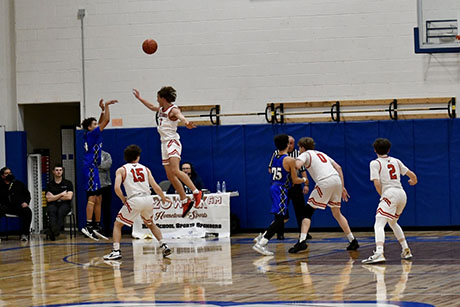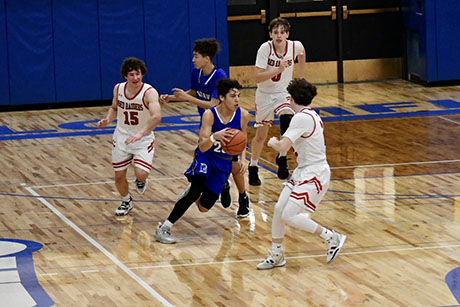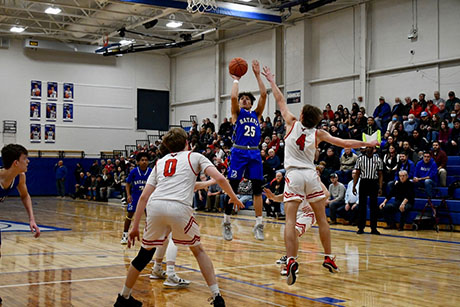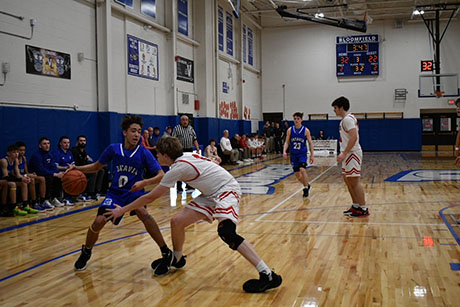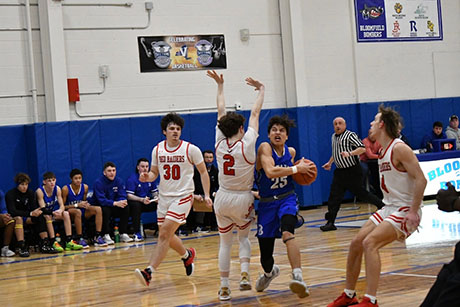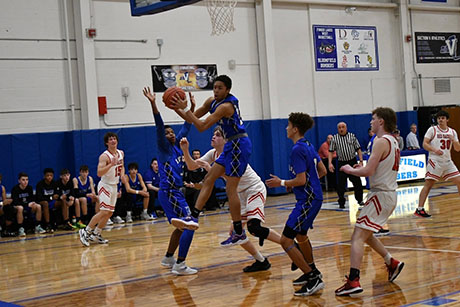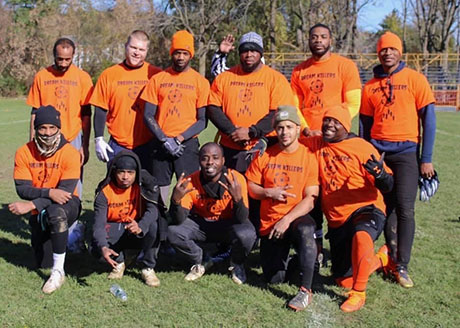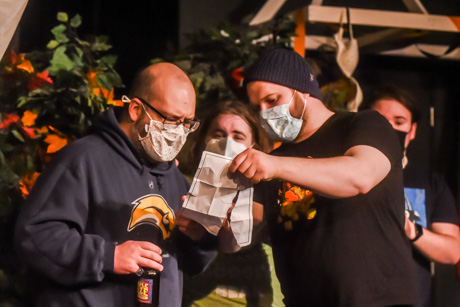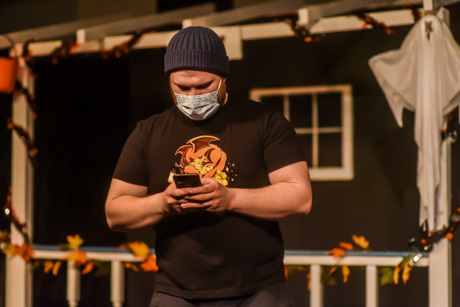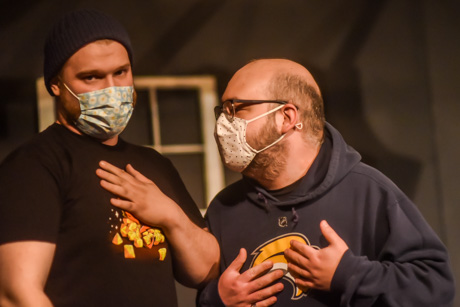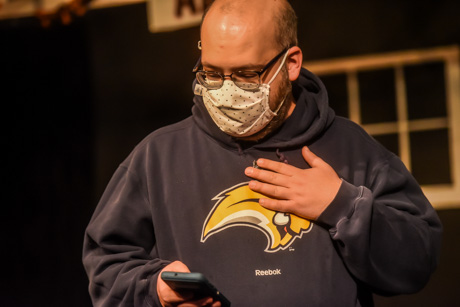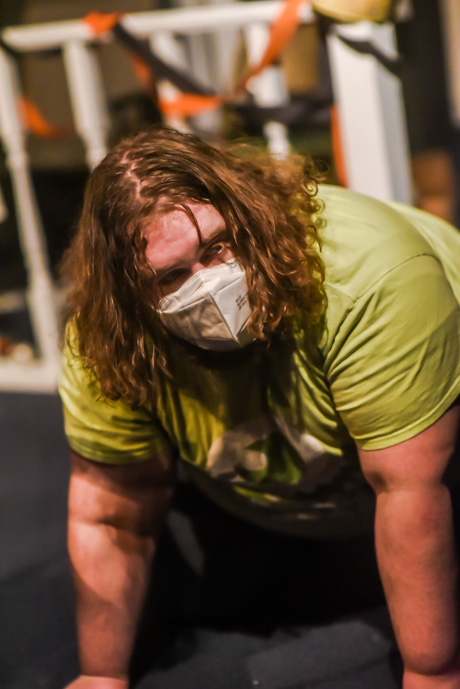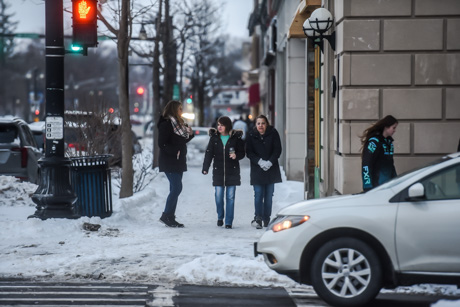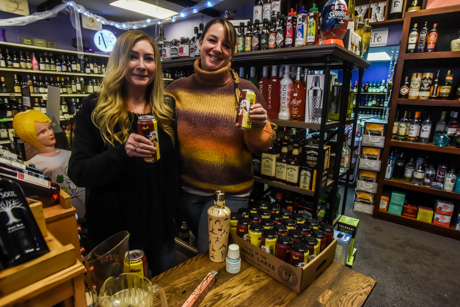It looked like the Batavia Players cast had quite a party as show Director Anthony Baldwin-Giambrone dropped empty beer bottles into a cooler near the stage Monday evening.
There was a party, he said, however, only as part of the 2022 Shakespeare in Springtime series. Beer-drinking during a yearly Shakespearean staple? Only when the setting has been switched up from the typical 16th Century scenario of kings, queens, and jesters, to a modern-day educational setting.
“We took the entire show and set it at a college, with a fraternity house and a sorority house,” Baldwin-Giambrone said during rehearsals at the new venue inside City Centre. “We had this play ready to go in March 2020 … we have two-thirds of the original cast back. We had to recast eight people, and we bumped up an actor from a small role to a lead role.”\
The show didn’t go on then, as all things COVID-19 shut it down. Fast forward two years and construction of the new theater is still in progress as new and returning cast members rehearse in The Backstage space that accommodates 84 patrons. Known as “black box theater,” this space offers a close-up view of the action. It was a welcome sight for 34-year-old Justin Chortie, he said.
“It’s nice and intimate,” the North Tonawanda actor said. “I haven’t done black box since college.”
He plays Ferdinand the King, aka president of the fraternity. Thought to be sort of snobby, his character convinces his friends to give up girls for a while. Of course, this wouldn’t be a comical love story if the king actually followed his own advice, as Chortie said, and the king’s own words get him into hot water.
Chortie believes the two-hour round trip for rehearsals is worth it. He had but one word for why: passion.
“To hear the audience laugh, it’s adrenaline almost, it’s like a drug,” he said. “I mean, it's wild. You gotta go. You’ve got kings and princesses, but they're not really kings and princesses; they're fraternities and sororities. There's all kinds of fun.”
The show is Love’s Labour’s Lost, and it’s set for 7:30 p.m. Friday and Saturday and 2 p.m Sunday at The Backstage at Main St. 56 Theater, Batavia. For those unfamiliar with this new space at Batavia City Centre, the entrance is a purple door next to Batavia Family Dental.
Love's Labour's Lost is one of William Shakespeare's early comedies, believed to have been written in the mid-1590s for a performance before Queen Elizabeth I. The King of Navarre and his three companions attempt to swear off the company of women for three years in order to focus on study and fasting. They break their oath through a subsequent infatuation with the Princess of France and her ladies. The play closes with the death of the Princess's father, and all weddings are delayed for a year.
Although Baldwin-Giambrone is no stranger to the Players troop or the Shakespeare series, this is his first time directing this particular show. A resident of Kenmore, he is one of a big handful of actors and staff driving to and from rehearsals after a more typical day job.
For this director, he goes from being a special education high school math teacher by day to working with a cast of 18 people at night. Think Shakespeare is dull, dry, and a ho-hum display of antiquated dialect? Think again, he and his cast members said. This is a show they described as “fun and funny.”
What hasn’t been so funny is how that unyielding pandemic wiped out this show two years ago.
“We were two weeks away from opening. And then we were shut down before we opened. And then with COVID, we had to make sure we were wearing masks at all rehearsals,” he said. “And then I know my assistant director, Jane (Burk), she actually, after every single rehearsal, stayed after and wiped down all the surfaces and sprayed and cleaned everything.”
Pushing COVID repercussions aside, Baldwin-Giambrone ran with the comical theme of Love’s Labour’s Lost. He replaced the more regal characters of kings and queens with frat boys and sorority sisters and paired them by personality — over the top and very clear cut — such as the dumb blonds and the studious ones.
“And they’re funny because this is a comedy. So it’s very funny seeing them do their very stereotypical distinct personalities,” he said. “The biggest challenge, I would say, was rehearsing in a shorter time period … just being able to get in here and start working with people to begin scheduling and everything. It just was a lot more tight.”
Dorothy Gerhart of Alabama had to drop her former role of Holofernes for the sorority mom, Boyet. It wasn’t really a bigger role, she said, because she counted the lines, and they were about equal. However, the mom role provided opportunity for more fun, she said. Her outfits are wild and colorful, with leopard, tie-dye, and purple pok-a-dot patterns.
“I think she graduated from college but never really left,” Gerhart said. “She sees herself as one of the girls. She’s kind of the comedy relief, with a lot of funny lines.”
Aaron Klafehn is another newcomer to the Players, though not at all new to acting, he said. Working in quality control for HP Hood in Batavia, the 34-year-old discovered Batavia Players through his partner, the show's assistant costumer Marshall McCall. Klafehn has been interested in theater since elementary school. He plays the role of Costard, who he describes as a “chaos-causing math teacher.”
“He purposely does things incorrectly, to try and get a rise out of someone else,” Klafehn said, adding that he had a hiatus from theater during the last couple of years. “I fell right back into it, and am making new connections. It’s much different than the day-to-day aspects of what I do. It’s fun to bring someone’s creation to life. I try and make sure that it's as organic to the character that I'm creating as possible, rather than trying to imitate or copy someone else's. I'm excited to be back performing again, and very excited to see the new performing space when it's finished.”
Tickets are $15 for adults, $13 for students and seniors. To purchase tickets, go to: showtix4u.com
Top photo: Shaun Coburn, Justin Chortie and James Barcomb run through a rehearsal Tuesday night of Batavia Players' upcoming Love's Labour's Lost, which is set for 7:30 p.m. Friday and Saturday and 2 p.m. Sunday at The Backstage at Main St. 56 Theater, Batavia City Centre. The actors are joined by Sam Bowman, shown in the fourth photo from the top, during mandatory masked rehearsals for the Shakespeare in Springtime Series comedy by Batavia Players. Photos by Howard Owens. Editor's Note: Due to scheduling conflicts, this rehearsal was not in costume.
